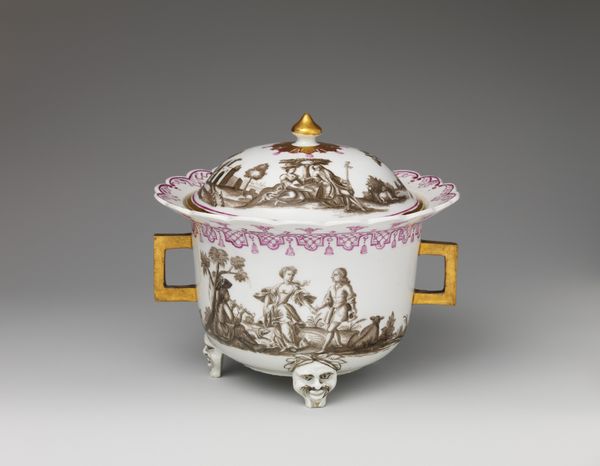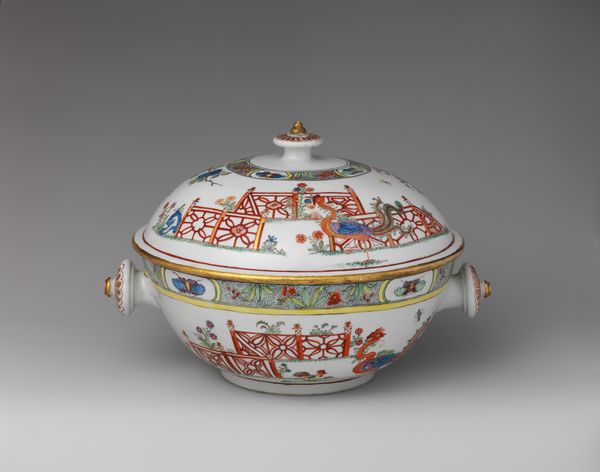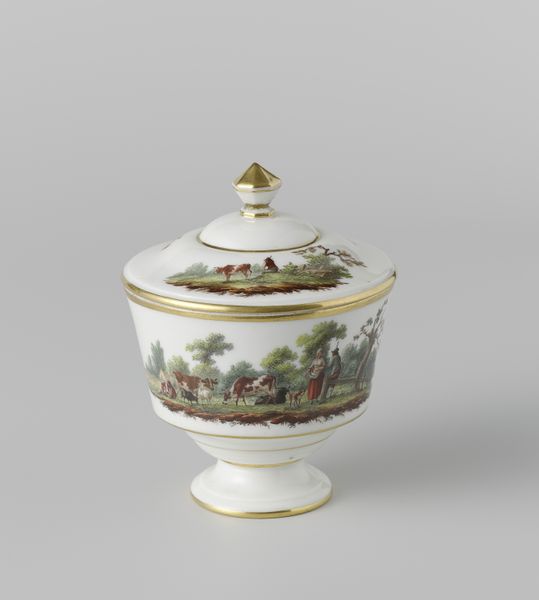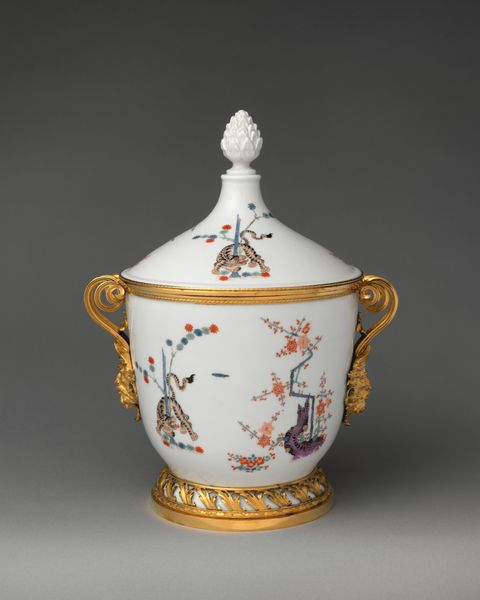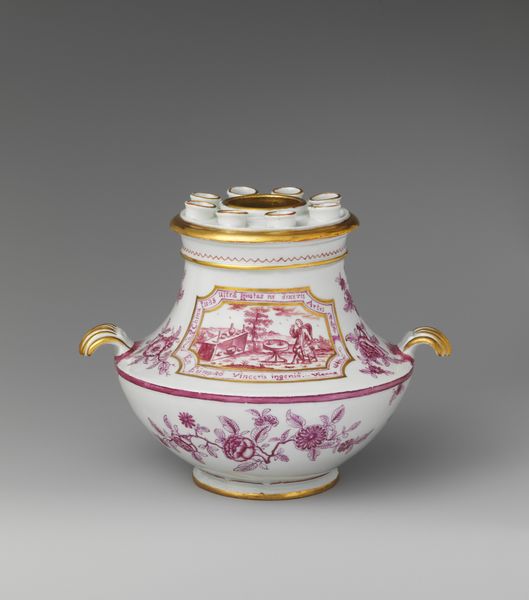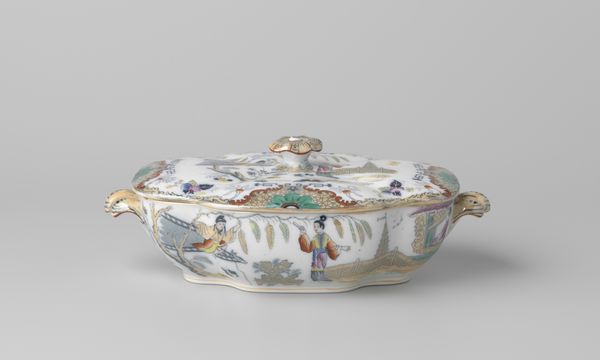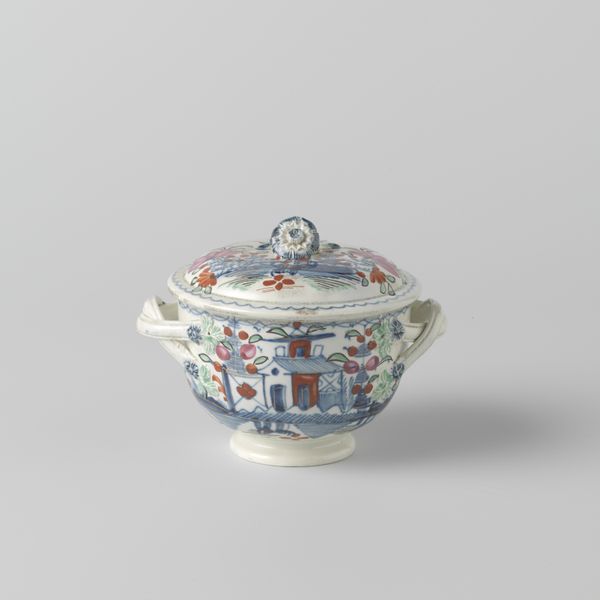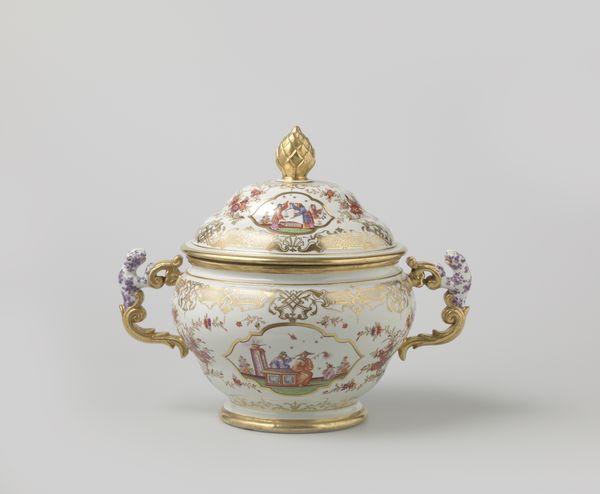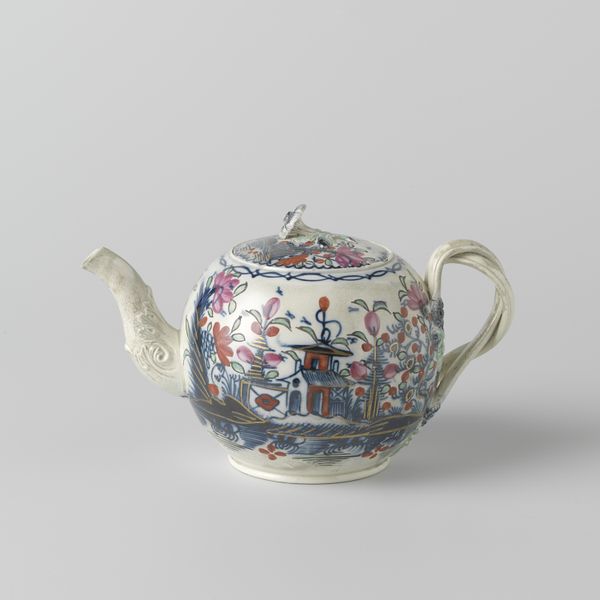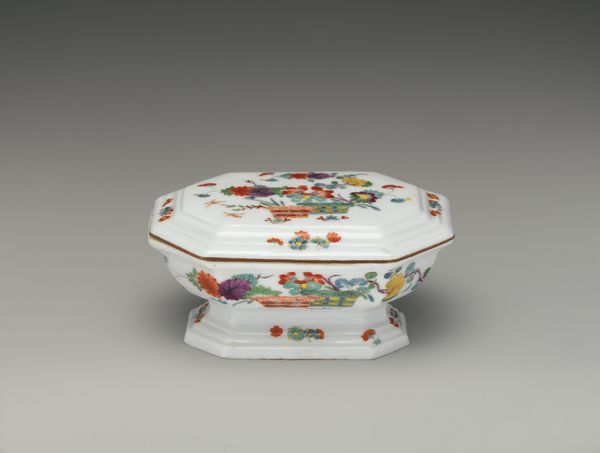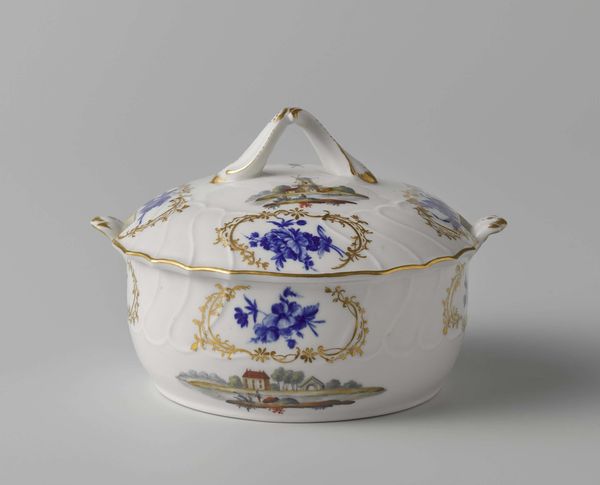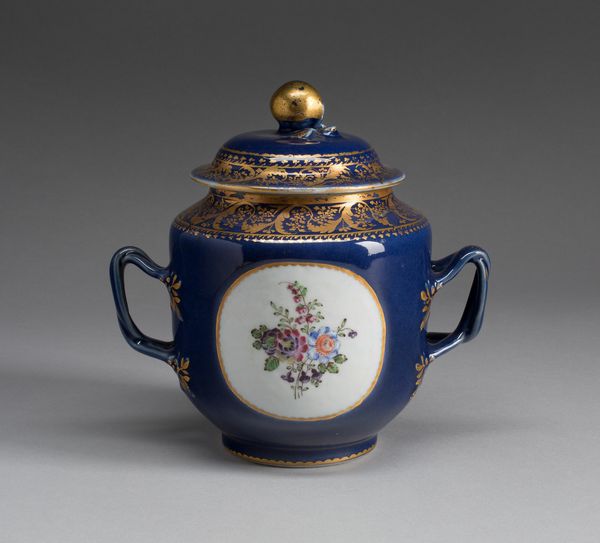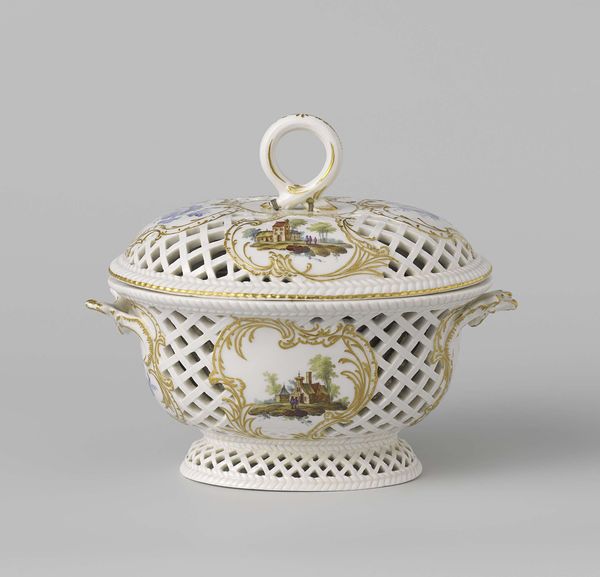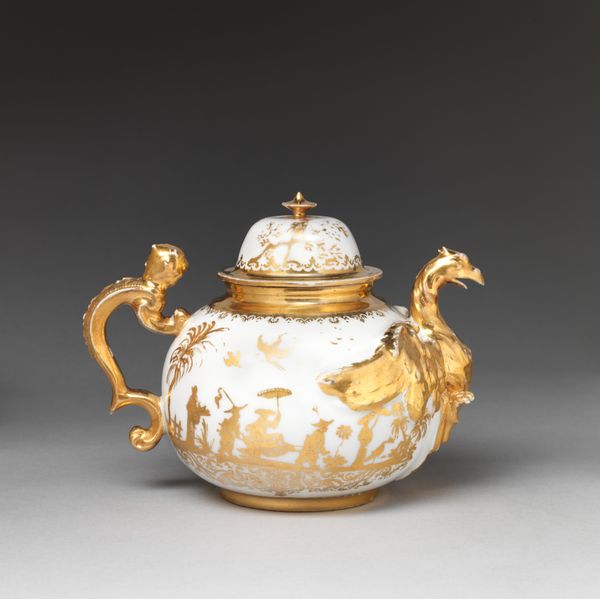
ceramic, porcelain, sculpture
#
ceramic
#
porcelain
#
sculpture
#
decorative-art
#
rococo
Dimensions: Cup with cover (.85ab): H. 3-7/16 in. (8.7 cm.); W. 4-11/16 in. (11.9 cm.) Saucer (.86): H. 1-1/8 in. (2.9 cm.); Diam. 6-1/16 in. (15.4 cm.)
Copyright: Public Domain
Editor: This is a porcelain “Small Tureen and Stand” dating back to between 1725 and 1740. Its currently located at the Metropolitan Museum of Art. The colors seem vibrant despite its age. How would you interpret this work? Curator: From a materialist perspective, consider the labor involved. Fine porcelain like this was a highly prized, technically challenging material to produce in the 18th century. Think about the social context – who was consuming these objects, and what did that consumption signify? It's a statement of wealth. What do you notice about the way the figures are painted? Editor: The figures seem idyllic and sort of quaint, almost like illustrations from a fairytale. Curator: Exactly! These painted scenes reinforce that consumer fantasy, and often downplay the often exploitative conditions of the artisans themselves who are creating these pieces.. The very act of producing porcelain – controlling the kiln temperature, sourcing the clay, employing the artists – these are all material acts laden with social meaning. What might the imagery tell us about that consumer base? Editor: So the seemingly innocuous pastoral scenes actually mask a much more complex network of production and power dynamics. It makes me think about fair trade ceramics today, too! Curator: Precisely! And the emphasis on decorative arts over say, history painting or large scale sculpture, speaks to the shift in power, wealth and what it meant to produce art. Consider too, the transition from guilds to factories… it is more about mass consumption and commodity culture. Editor: That’s given me a lot to think about regarding labor and the culture of consumption reflected in even seemingly simple pieces of decorative art. Curator: Indeed. By analyzing its materiality and production, we unveil layers of social and economic meaning embedded in this seemingly delicate object.
Comments
No comments
Be the first to comment and join the conversation on the ultimate creative platform.
